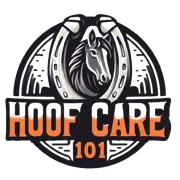Hoof cracks, splits and chips are a common problem in the equine world. They are defects in the hoof wall that can affect the health and performance of your horse. In this article, we will explain what they are, why they happen, and how they can be prevented and treated.
What are Hoof Cracks, Splits and Chips?
A hoof crack is the tearing of the hoof wall, noticeable on the outside of the hoof wall in the form of an abnormal groove facing either horizontal or vertical. A hoof crack can be superficial or deep, depending on how much it penetrates the inner layers of the hoof.
The word “split” comes into play when a crack or chip becomes more extreme, widening and leaving a noticeable gap. A split can compromise the integrity and strength of the hoof wall, exposing it to infection and further damage.
When a hoof is “chipping” it is losing stability at the bottom of the hoof, tearing chunks of hoof wall off through everyday movement. Chipping can be caused by excessive wear, dryness, or poor trimming.
Why do Hoof Cracks, Splits and Chips Happen?
There are many factors that can contribute to hoof cracks, splits and chips. Some of them are:
- Dry Weather: A horse’s hooves require the natural moisture found in rain and dew. In hot, dry weather, a horse’s hooves may require extra attention by the horse owner with hoof oils and conditioners to keep them from becoming brittle and breaking off.
- Long Hooves: Hoof chipping may be the result of long hooves. This is of course remedied easily by having a competent farrier out on a routine schedule specifically advised for that horse.
- Concussional Injury: A hoof crack may result from a trauma to the hoof, such as a stray kick or a stone bruise. Often a horizontal hoof crack will have been caused by a concussional injury. Commonly these horizontal cracks may be accompanied by heat in the hoof. A farrier and vet may be called to assess the severity of the injury.
- Nutritional Concerns: A horse’s hoof growth is affected by what they eat. Sometimes, one may find a horse that needs extra vitamin and supplement than the rest of the herd. This will be noticeable in the form of hairline cracks from the coronet band down to ground level. A good hoof supplement will often take care of this problem.
How to Prevent and Treat Hoof Cracks, Splits and Chips?
The best way to prevent hoof cracks, splits and chips is to provide proper hoof care, nutrition and management for your horse. Some tips are:
- Keep your horse’s hooves trimmed regularly by a qualified farrier. A balanced and well-shaped hoof will reduce stress and wear on the hoof wall.
- Provide adequate moisture for your horse’s hooves. Use hoof oils or conditioners as needed, especially in dry weather. Avoid soaking your horse’s hooves excessively, as this can cause softening and weakening of the hoof wall.
- Feed your horse a balanced diet that meets their nutritional needs. Supplement with biotin, zinc, copper and other minerals that support healthy hoof growth.
- Protect your horse’s hooves from injury. Use boots or pads when riding on rough terrain or hard surfaces. Avoid exposing your horse to wet or dirty conditions that can cause thrush or white line disease.
If your horse develops a hoof crack, split or chip, consult your farrier or vet for advice on how to treat it. Depending on the type and cause of the defect, different treatments may be required, such as trimming, shoeing, filling, stabilizing or poulticing. The goal is to relieve pain, prevent infection and promote healing.
